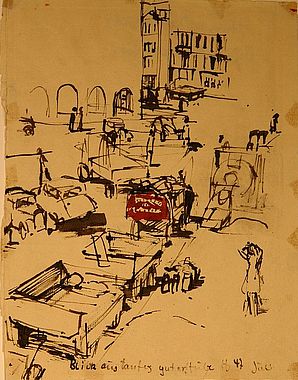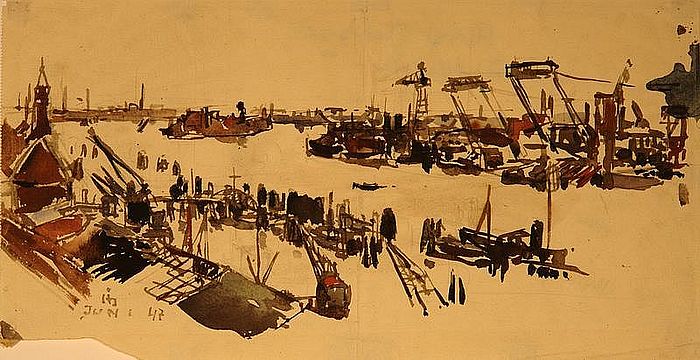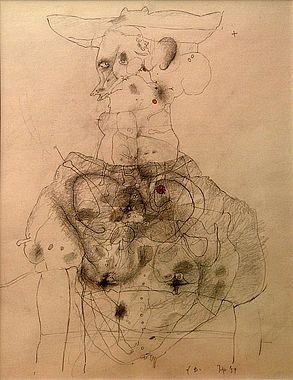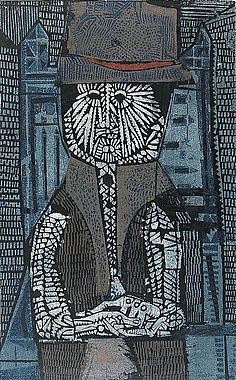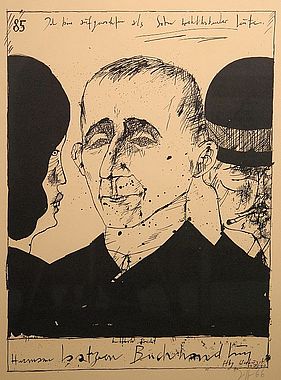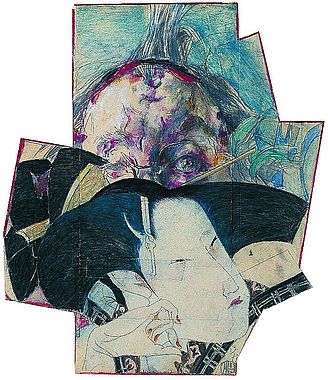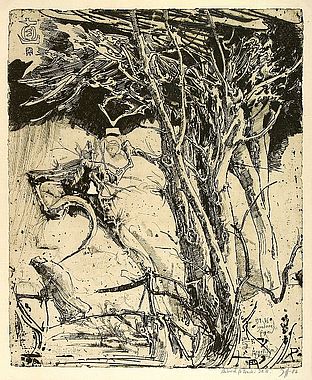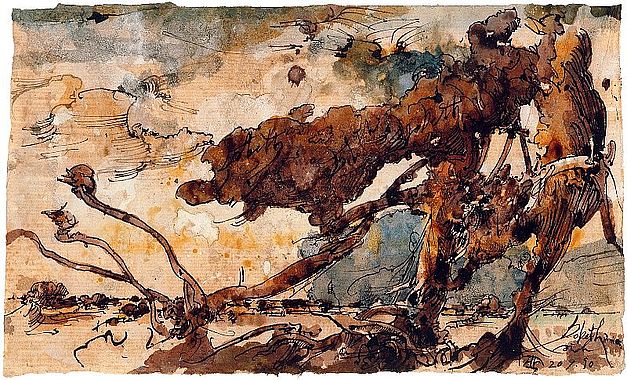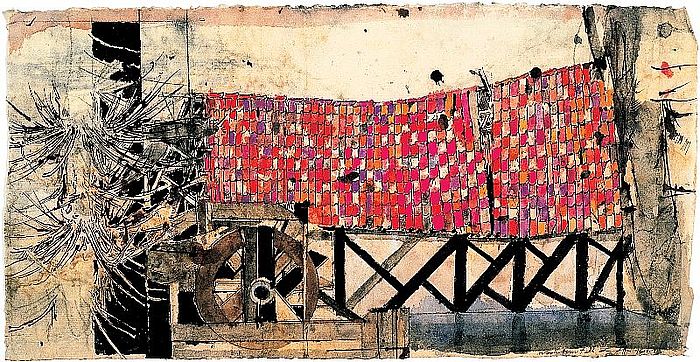The Work of Horst Janssen
The 1940s
1942-45 | First drawings as a pupil of the National Political Institute of Education (Napola) in Haselünne. |
| 1947 | Teacher Alfred Mahlau arranges the first small commissions. |
1948 | Illustrations for fables and fairy tales, including 16 pen and ink drawings for the satirical magazine “Eulenspiegel”. |
| 1949 | Works by Horst Janssen come in various publications. |
The 1950s
1950 | His second book is published: “Wettlauf zwischen Hase und Igel auf der Buxtehuder Heide” (Race between the Hare and the Hedgehog on Buxtehude Heath). |
| 1952 | Commissioned work for Guido Dessauer, manufacturer of coloured paper in Aschaffenburg. In the following years he paints portraits of the family in oil. |
| 1954 | Design work for Guido Dessauer: advertising supplements, exhibition stands. |
| 1955 | Design of the stained-glass windows for the Deutsche Bahn office building in Hamburg-Altona. |
| 1956/57 | “Selige Schnippelzeit “ (Blessed chopping time): creation of large-format woodcuts: animals, street scenes and female figures. Inspiration from Ben Shahn. Janssen prints by hand. |
| 1957 | New focus on etching as a technique. Paul Wunderlich introduces him to this printing process. |
| 1958 | Large-format etchings are accomplished. The works show the influence of Jean Debuffet and his Art Brut. |
| 1959 | Period of “manic scribbling”, including the “telephone etchings”. Pencil and coloured pencil drawings, informed by Richard Oelze’s drawing technique. At the beginning he employs the colours very faintly. |
The 1960s
| 1961 | Once more woodcuts, then he “never touched wood again, not for creating pictures”. | |
| 1962 | Commissioned by the City of Hamburg for the artistic design of the entrance to Farmsen underground station. | |
| 1965 | Large comprehensive exhibition at the Kestner Gesellschaft Hannover: the catalogue of printed works produced on the occasion already contains 400 sheets. The exhibition marks Janssen’s real breakthrough and will go on tour. | |
| 1967 | His own publications with his drawings (“10 drawings from the Poppe Collection”) are issued, including calendars, foldout booklets and New Year’s greetings . | |
| 1969 | Books with his own versions of “Grimm’s Fairy Tales” are created: “Hensel und Grätel” and “Paul Wolf and the 7 Young Kids”. |
The 1970s
| 1970 | Janssen is now drawing from nature. From now on, the artistic charm for him rather emanates from the object. |
| 1971 | Encounter with East Asian art through Gerhard Schack. The etching cycle “Hokusai’s stroll. Treatise on the production of an etching” is created, turning to the examination of models. |
| 1972 | Impressed by Claude Lorrain’s landscapes, Janssen creates some 250 washes, pen and ink drawings of the same theme. |
| 1974 | Drawings, pictorial letters, collages, foldout booklets and very small objects are created. Their purpose is to court Birgit Jacobsen. |
| 1975 | The “November-Buch” (November book) is published. He calls it his “master-piece”. |
| 1976 | In the next two years he creates numerous erotic watercolours inspired by his love for Viola Rackow. |
The 1980s
| 1981 | Publication of his literary works since 1950 in “Querbeet” (At random) with essays, speeches, treatises, pamphlets, short stories, poems and ribaldries. |
| 1982 | The pamphlet “Angeber Icks. 1ne Quijoterie” is issued: polemics in words and pictures against the art market and Janssen’s most despised contemporary artist colleagues, above all Andy Warhol and Joseph Beuys. |
| 1986 | Janssen works on large landscape etchings: “Laokoon” (Laocoon. The trees of Annette). |
The 1990s
| 1990 | After Janssen was in danger to lose his eyesight due to an acid accident, he is inspired by his girlfriend Heidrun Bobeth to create the “Bobethanien” (Bobethania) series comprising 100 landscape watercolours. |
| 1991 | Once more, posters are created. |
| 1994 | A journey of the previous year inspires him to create landscape motifs with shingle roofs. |
| 1995 | Last works are accomplished in March. Horst Janssen dies on 31 August as a result of several strokes. |

